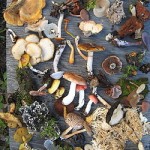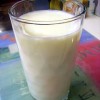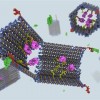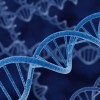Diverse Proteins
 The instructions for life are carried in the DNA of our cells. All day long, our cells read the information in our DNA and make proteins. While DNA contains recipes for how life works, proteins are molecules that I consider the “doers” in our cells.
The instructions for life are carried in the DNA of our cells. All day long, our cells read the information in our DNA and make proteins. While DNA contains recipes for how life works, proteins are molecules that I consider the “doers” in our cells.
Protein is a broad category that includes enzymes and hormones. When you eat an apple, your body produces enzymes to break down that apple and build new products for your body. If you have a lot of glucose (a type of sugar) in your blood, the cells in your pancreas will read the gene for insulin and produce the protein. Even the tight skin of youth relates to proteins. The elasticity of your skin depends, in part, on the production of the protein collagen in your skin cells. As humans get older we produce less collagen, which is one of the reasons our skin becomes less taut.
If an organism has a change, or mutation, in their DNA what can this mean? If the mutation happens in a region of DNA that does not code for anything then the mutation may go unnoticed. If, however, the mutation happens in a coding region of a gene, then protein production may be affected. In some cases, the change in DNA can cause a protein to be produced that will have no function or even be destroyed by the cell. In contrast, the protein may be produced in larger amounts or at different times.
Another possibility is that the altered protein may be just slightly different. This new protein may be able to even carry out the same job of the original one. Also, the new protein may offer a new function or provide a new trait for the organism. All of these possibilities offer variety in life.
Although there is often a negative association with mutations because of their role in causing genetic disease, life would not exist without them.
| Print article | This entry was posted by Erin McKechnie on October 14, 2009 at 10:57 am, and is filed under DNA From The Beginning. Follow any responses to this post through RSS 2.0. You can skip to the end and leave a response. Pinging is currently not allowed. |









